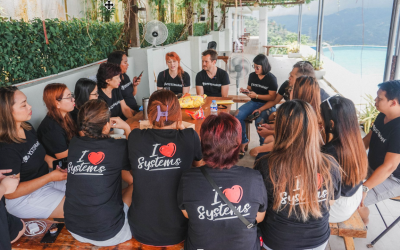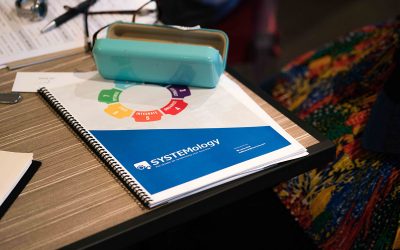
Offshore outsourcing can be a fruitful way to expand your business at a reasonable cost. However, if your virtual team members are working from home in a developing country, they may have unreliable electricity and limited access to the internet. This will compromise their output. One way to over come these difficulties is to have them work in a facility. This can be by seat leasing or agent leasing. When your employees work from a facility, their electricity and internet will be reliable and they will be adequately supervised.
What does working in a facility cost the employer?
If you’re working with someone direct, and obviously it depends on the role of the person and what it is that they’re doing, and the price might vary. But it could be around the $4, $5, $6 to work with someone directly who works from home. That’s good, fair pay for someone in the Philippines. That will help cover their overhead expenses, or part thereof.
If you go to a facility you might pay an additional $250 a week. So it does add a bit of cost. But benefits come from that. Even though you might pay a bit more, it actually very often ends up saving you money. You get additional up time, consistency from the team member and it takes away a lot of the issues like unreliable electricity. There is a lot of admin time and supervision time that goes into overlooking a team member, trying to chase up these electricity and internet and computer problems.
But if that is solved, it gets taken out of the equation. Then if something does pop up, you’ve got a point of contact. You can go to one of these facilities or whoever the supervisor is in that facility and say, get this figured out for me. I’m paying you this money to make sure that this is not a problem for me.
Seat leasing

Seat leasing is a good first option.
There are a couple of different ways you can work in the Philippines. You can go direct. You can have people working out from home. Then you can have them working out of these facilities. They call it seat leasing. Seat leasing is basically where you lease out a space. You might still do the recruiting, you might have your own team member and they’ll now come into this facility and that will take a lot of the headache away from what you had previously. That’s one way to go.
Agent leasing
There is also another level up beyond that, which is called agent leasing. That’s where you get the combination. You get not only the facility, but they will recruit someone for you and they’ll also place them.
With this agent leasing, there are definitely a lot of additional benefits which people oftentimes don’t take into account. You’ll usually have a supervisor, someone who keeps an eye on the team member, making sure they actually check in. You have some HR, a person who keeps an eye on what they’re doing. They can handle their pay. This is over and above the other benefits you get out of working from a facility.
The agent leasing can work really well. You get all of those benefits of the seat leasing, all of the infrastructure and things put in place. In addition to that, you get some supervision as well. The supervision really just sets things up a notch.
If someone has set times when they have to arrive and when they finish up on their day and they only get paid for the work that they actually show up and do, this is good. Having someone check in with on a regular basis and creating that group culture and that family, that’s really the biggest win.
A lot of the Business Process Outsourcing operations set up these big centers and they will probably have some core businesses that they service. There are many big Business Process Outsourcing centres in Metro Manila such as Optus’ call center, Virgin Australia and Telstra as well. Some have little cubicles with people working in them. Others are more like a co-working space.
These spaces that are popping up, and they’ll have the option for agent leasing where you’ll get the facility and the assistant. Otherwise you might just get the seat leasing where you can place someone in there.
Options for outsourcing to the Philippines
To sum up, there are three options when working in the Philippines or offshore outsourcing. You can go direct and have someone work at home. You can do seat leasing where you still recruit but you place the person. Or you can do agent leasing where they provide the facility and the person.
Obviously it’s a sliding scale. The more things that get added in, the higher the cost because they obviously need to be offset. But you need to make sure, if you do go for someone, that they are really adding value.
Avoid the unscrupulous provider
Some companies recruit and then they’ll join you up with the team member and they’ll take an ongoing clip. The VA still ends up working at home. They don’t really add much value beyond doing the initial recruitment and yet they continue to take an ongoing clip. They take a disproportionate share and don’t feed the rest back to the VA. The VA gets a lot less. The providers aren’t adding any actual value over and above.
That’s taking advantage of the situation.
You want to avoid those, so you need to do your due diligence and make sure when you are looking for a provider, that they are adding value over and above what you’re paying, otherwise you might as well go direct.
Guarantee good supervision
The first big hurdle is around infrastructure. The second big hurdle that people come up against is team based such as no shows, productivity and making sure that someone is really doing something of value here. The idea that someone might be surfing around on facebook or social media or wasting their time or saying they’re doing work when they’re actually not, becomes even easier if someone is working straight out of their home.
It’s not always the case and it’s not fair to throw the baby out with the bathwater to say that is a human nature type thing. If you find good team members, they will want to work with you and do the right thing. So you can make it work having people carry out their paid employment at home. But it’s definitely easier if there is some sort of supervision or some sort of team around them.
There are things you can set in place to manage your team like End of Day emails, having weekly calls and having set times when people come in. You can have a group chat in Skype where everybody hops in and says hello and those sorts of things. Those big rocks when put in place help to reduce some of these problems.
Filipinos managing Filipinos
The biggest win is when you get some sort of supervision and you get a Filipino managing another Filipino. The fact is there are some significant cultural differences between the way Australians manage and the way Filipinos do. As a general rule, Australian managers don’t manage Filipinos as well as a Filipino does.
They understand the culture better, they understand how to get the most out of the team members. They can create that family environment and that culture. They can really motivate people, they can sense when something is not quite right.
For example, your VA might just go quiet. Oftentimes that is a telltale sign that the team member is not happy about something. This is stereotyping, there are always exceptions to the rule, but it’s not necessarily in their culture to speak up. So if they go quiet, that means they’re not happy with something.
So having a Filipino manage the Filipino team you’ll get better efficiency and have the team enjoying it a little bit more. When you’re talking about a team of twenty plus, you might still have some sort of direct supervisor, an Australian person, maybe you fly them over and they work in the facility with them. But Filipino reporting to Filipino is a great way for you to increase your productivity level.
If you’re just working with one VA on their own, that can be difficult to do. Obviously you are the direct person, but as you start to build your team, you really want to plug in another team member in between you. Really that is what you need to grow the team anyway.
Reap the benefits of a facilityReady to take your systems to the next level?
If you try to cut the corners and think, if I go direct, I’m going to save the most amount of money, you end up spending more in management. There are all of these problems you may come up against if you forego offshore outsourcing. Having your team work from a facility will solve your problems of infrastructure plus any problems of supervision and productivity you could experience with your virtual team. An added benefit will be that your team member will enjoy his employment more because they are being supervised by someone from their own culture.
Ready to take your systems to the next level?
Organize all your SOPs, processes & policies in one simple, location – start your 30-day FREE systemHUB trial.









